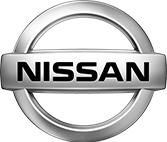Transmission Mount: Explained
The transmission mount plays a key role in the functioning of a vehicle’s transmission system. Its main job is to hold the transmission in place within the vehicle and to minimize the vibrations and shocks encountered while driving. This piece will explore the specifics of the transmission mount, including its importance in transmission repair and what you need to know about this vital part of your vehicle.
For anyone involved in the automotive field, whether you’re a mechanic, a technician, or simply a vehicle owner curious about how your car works, understanding the transmission mount is essential. This piece aims to offer a thorough overview of the transmission mount, detailing its function in the transmission system and highlighting common issues that may arise with it.
Understanding the Transmission Mount
The transmission mount is a part of the vehicle’s transmission system that is often overlooked, but it plays a vital role in the vehicle’s operation. It is designed to securely hold the transmission in place, preventing it from moving or shaking when the vehicle is in motion. This is crucial for maintaining the alignment of the drivetrain components and ensuring the smooth operation of the vehicle.
Moreover, the transmission mount also serves as a shock absorber, reducing the vibrations produced by the engine and the road. This helps to enhance the comfort of the vehicle’s occupants and reduce the wear and tear on other vehicle components. Without a properly functioning transmission mount, the vehicle’s performance and comfort can be significantly compromised.
Components of the Transmission Mount
The transmission mount is typically composed of a metal frame and a rubber or polyurethane insert. The metal frame is designed to withstand the weight of the transmission and the forces exerted on it during vehicle operation. On the other hand, the rubber or polyurethane insert serves as a cushion, absorbing the vibrations and shocks that the vehicle experiences.
Some transmission mounts also include a liquid-filled core for enhanced vibration absorption. This type of mount is known as a hydraulic mount. The liquid inside the mount helps to dampen the vibrations even more effectively than a solid rubber or polyurethane insert.
Location of the Transmission Mount
The transmission mount is located underneath the vehicle, attached to the transmission and the vehicle’s chassis. Its location allows it to effectively support the transmission and absorb the vibrations produced by the vehicle’s operation.
However, due to its location, the transmission mount is also exposed to a lot of heat and contaminants, such as oil and dirt. This can lead to the degradation of the mount over time, necessitating its replacement.
Role of the Transmission Mount in Transmission Repair
The transmission mount plays a crucial role in transmission repair. A damaged or worn-out transmission mount can cause a variety of issues with the vehicle’s transmission system, such as misalignment of the drivetrain components, excessive vibrations, and even transmission failure.
Therefore, when performing transmission repair, it is essential to inspect the transmission mount and replace it if necessary. This can help to ensure the longevity of the transmission repair and the overall performance of the vehicle.
Signs of a Bad Transmission Mount
There are several signs that can indicate a bad or failing transmission mount. These include excessive vibrations, especially when accelerating or decelerating, a clunking or banging noise when shifting gears, and a noticeable shift in the position of the transmission.
Moreover, a visual inspection of the mount can also reveal issues. Signs of a bad transmission mount include cracks or breaks in the mount, excessive wear, and oil or other fluid leaks.
Replacing the Transmission Mount
Replacing the transmission mount is a crucial part of transmission repair. If the mount is damaged or worn out, it can compromise the effectiveness of the repair and lead to further issues down the line.
The process of replacing the transmission mount involves removing the old mount, cleaning the area, and installing the new mount. It is a relatively straightforward process, but it requires a certain level of expertise and the right tools. Therefore, it is usually best left to technicians who are transmission repair specialists.
Types of Transmission Mounts
There are several types of transmission mounts available on the market, each with its own advantages and disadvantages. The most common types include rubber mounts, polyurethane mounts, and hydraulic mounts.
Rubber Mounts
Rubber mounts are the most common type of transmission mount. They are relatively inexpensive and provide good vibration absorption. However, they can degrade over time, especially when exposed to heat and contaminants.
Polyurethane Mounts
Polyurethane mounts are a popular alternative to rubber mounts. They are more durable and resistant to heat and contaminants, making them a good choice for high-performance applications. However, they are also more rigid, which can lead to increased vibrations.
Despite this, many automotive manufacturers prefer polyurethane mounts due to their longevity and performance. They are particularly popular among off-road enthusiasts and those who use their vehicles for towing or hauling heavy loads.
Hydraulic Mounts
Hydraulic mounts are the most advanced type of transmission mount. They feature a liquid-filled core that provides superior vibration absorption. This can significantly enhance the comfort of the vehicle’s occupants and reduce the wear and tear on other vehicle components.
However, hydraulic mounts are also the most expensive type of transmission mount. They can also be more prone to leaks, which can lead to a decrease in their effectiveness over time.
The transmission mount is a crucial component of any vehicle’s transmission system. It serves to secure the transmission within the vehicle and absorb the vibrations and shocks that the vehicle experiences while in motion. Understanding the transmission mount and its role in transmission repair is essential for anyone involved in the automotive industry or interested in the inner workings of vehicles.
Whether you’re a professional mechanic, a vehicle owner, or simply an automotive enthusiast, we hope that this article has provided you with a comprehensive understanding of the transmission mount and its role in transmission repair. Remember, a well-maintained transmission mount is key to the smooth operation and longevity of your vehicle’s transmission system.
Advanced Transmission Center is a Colorado-owned and operated auto repair shop with locations in Denver / Lakewood and Westminster. ATC specializes in driveline issues such as automatic transmission repair, four wheel drive repair, clutch replacement, differentials, manual transmissions and CVT. As Colorado's first AAA approved shop our goal is to provide accurate, timely service with exceptional customer satisfaction. All of our technicians are certified in the latest makes and models and we are one of the few transmission repair shops with a nationwide warranty.



 Free Customer Towing Service
Free Customer Towing Service  Free TrueTest™ Inspection
Free TrueTest™ Inspection  Fast Transmission Services
Fast Transmission Services  Comprehensive Warranty in Denver
Comprehensive Warranty in Denver 

























